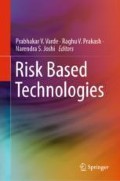Abstract
Subsequent to accidents at TMI-2, advanced light-water reactors were designed with several passive systems to enhance the defence-in-depth. These are called Gen III and Gen III+ reactors. The passive safety system works on the principle of natural laws and does not need an external source of energy or human intervention to actuate. These features make them more safe than the Gen II LWRs even in extreme events. Apart from simplicity in design, the passive safety systems are considered to be more reliable than the active safety systems. However, there are serious debates or concerns with regard to their performance or functional capability which must be established adequately due to several technical issues; for example: lack of plant operational experience; scarcity of adequate experimental data from integral test facilities or from separate effect tests. Other issues are lack of accepted definitions of failure modes of these systems; and, difficulty in modeling certain physical behavior of these systems. These create the issues of “reliability of passive systems”. Passive system reliability evaluation is a difficult task. It requires a thorough understanding of the physics of the phenomena, which drive the functional behavior of the system including its failure. Currently, best estimate codes are used to predict the performance of passive systems. However, these codes are not well validated for their applicability to passive systems due to the lack of sufficient plant/experimental data, which introduces large uncertainties and errors while evaluating the performance of passive systems. A historical review shows that a few methodologies such as REPAS, RMPS, and APSRA have been developed in the past. These methodologies have been applied to evaluate the reliability of passive systems. While these methodologies have certain features in common; but they differ significantly particularly in the treatment of deviations of process parameters from their nominal values and model uncertainty in best estimate codes which are paramount for evaluation of the reliability of such systems. Passive system performance is greatly affected by deviations of process parameters from their nominal values. During extreme events, the evolution of these process parameter values may increase/decrease the event occurrence probabilities and failure rate of components. In addition, components of passive systems can fail at any intermediate positions of operations instead of the classical assumption of binary state failure. Current methodologies lack treatment of these dynamic failure characteristics of components of passive systems. It is also required to pay attention to the treatment of dynamic variations of independent process parameters such as atmospheric temperature in passive system reliability analysis in future. This paper discusses the essence of adopting passive systems in new designs of nuclear reactors, their issues with regard to modeling the performance, failure behavior, and reliability concerns.
Access this chapter
Tax calculation will be finalised at checkout
Purchases are for personal use only
References
IAEA TECDOC-626. (1991). Safety related terms for advanced nuclear plant. IAEA.
Sinha, R. K., & Kakodkar, A. (2006). Design and development of the AHWR—the Indian thorium fuelled innovative Nuclear reactor. Nuclear Engineering and Design, 236, 683–700.
Cheung, Y. K., Shiralkar, B. S., & Rao, A. S. (1998). Design evolution of natural circulation in ESBWR. In Proceeding of the 6th International Conference on Nuclear Engineering (ICONE-6).
http://www.westinghousenuclear.com/New-Plants/AP1000-PWR/Safety/Passive-Safety-Systems.
Nayak, A. K., & Banerjee, S. (2017, March 1) Pressurized heavy water reactor technology: Its relevance today. ASME J of Nuclear Rad Sci, 3(2), 020901. (p. 9) Paper No: NERS-17-1006. https://doi.org/10.1115/1.4035856.
http://www.neimagazine.com/features/featuresafety-features-of-the-pfbr/.
Hinds, D., & Maslak, C. (2006). Next-generation nuclear energy: The ESBWR, Nuclear News.
Cummins, W. E., Corletti, M. M., & Schulz, T. L. (2003). Westinghouse AP1000 advanced passive plant. In: Proceedings of ICAPP’03, Cordoba, Spain, May 4–7.
D’Auria, F., & Galassi, G. M. (2000). Methodology for the evaluation of the reliability of passive systems. Italy: University of Pisa, DIMNP, NT.
Marqu’es, M., Pignatel, J. F., Saignes, P., D’Auria, F., Burgazzi, L., M̈uller, C.,et al. (2005). Methodology for the reliability evaluation of a passive system and its integration into a probabilistic safety assessment. Nuclear Engineering and Design, 235, 2612–2631.
Nayak, A. K., Gartia, M. R., Antony, A., Vinod, G., & Sinha, R. K. (2008). Passive system reliability analysis using the APSRA methodology. Nuclear Engineering and Design, 238(6), 1430–1440.
Jafari, J., D’Auria, F., Kazeminejad, H., & Davilu, H. (2003). Reliability evaluation of a natural circulation system. Nuclear Engineering and Design, 224, 79–104.
Zio, E., Cantarella, M., & Cammi, A. (2003). The analytic hierarchy process as a systematic approach to the identification of important parameters for the reliability assessment of passive systems. Nuclear Engineering and Design, 226, 311–336.
Pagani, L. P., Apostolakis, G. E., & Hejzlar, P. (2005). The impact of uncertainties on the performance of passive systems. Nuclear Technology, 149, 129–140.
Kumar, M., Chakravarty, A., Nayak, A. K., Prasad, H., & Gopika, V. (2014). Reliability assessment of passive containment cooling system of an advanced reactor using APSRA methodology. Nuclear Engineering and Design, 278, 17–28.
Chandrakar, A., Nayak, A. K., & Gopika, V. (2016). Development of the APSRA+ methodology for passive system reliability analysis and its application to the passive isolation condenser system of an advanced reactor. Nuclear Technology, 194(1), 39–60.
Nayak, A. K., et al. (2009). Reliability Assessment of Passive Isolation Condenser System of AHWR Using APSRA Methodology. Reliability Engineering and System Safety, 94, 1064.
Author information
Authors and Affiliations
Corresponding author
Editor information
Editors and Affiliations
Rights and permissions
Copyright information
© 2019 Springer Nature Singapore Pte Ltd.
About this chapter
Cite this chapter
Nayak, A.K. (2019). Design of Advanced Reactors with Passive Safety Systems: The Reliability Concerns. In: Varde, P., Prakash, R., Joshi, N. (eds) Risk Based Technologies. Springer, Singapore. https://doi.org/10.1007/978-981-13-5796-1_3
Download citation
DOI: https://doi.org/10.1007/978-981-13-5796-1_3
Published:
Publisher Name: Springer, Singapore
Print ISBN: 978-981-13-5795-4
Online ISBN: 978-981-13-5796-1
eBook Packages: EngineeringEngineering (R0)

